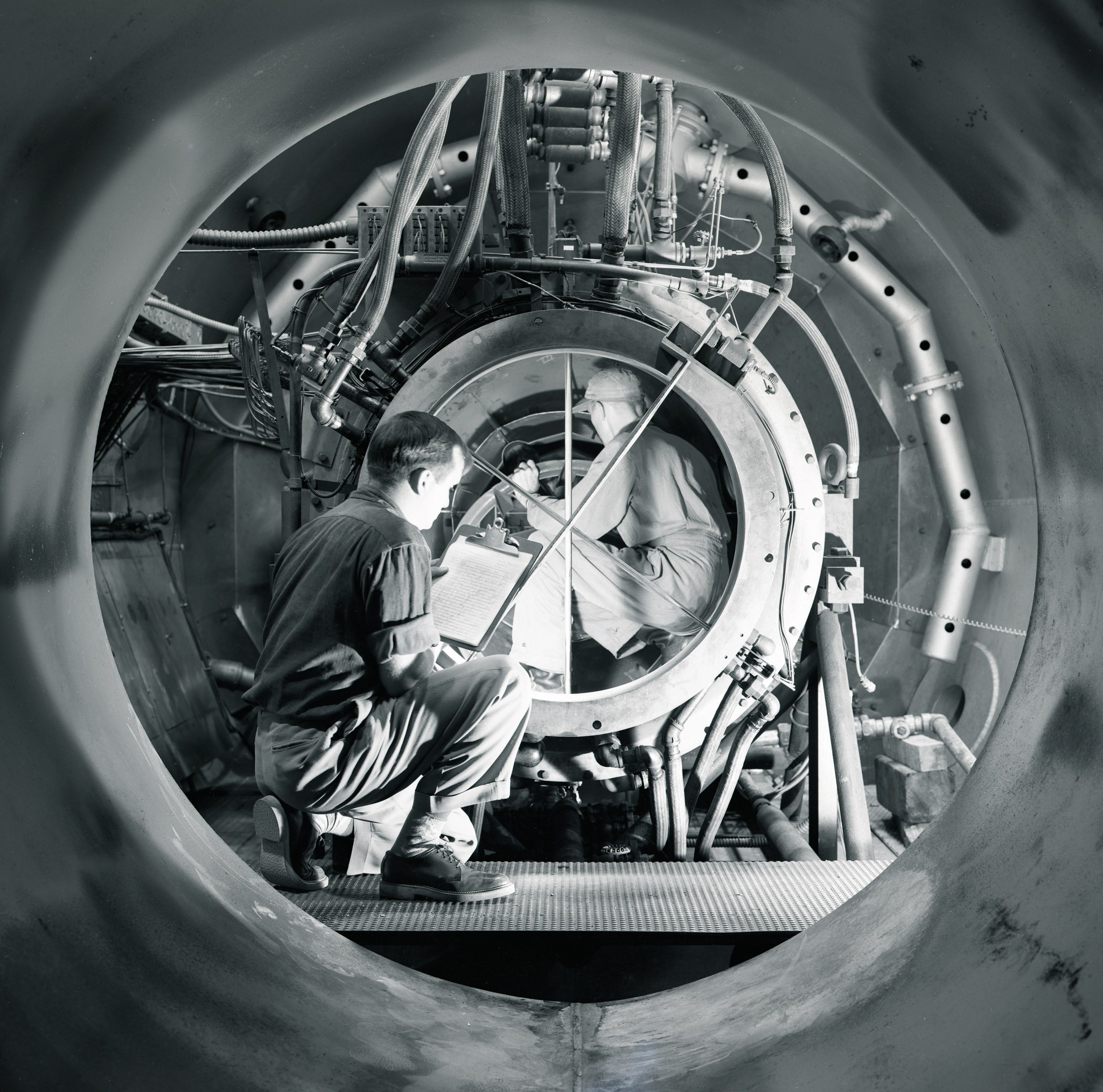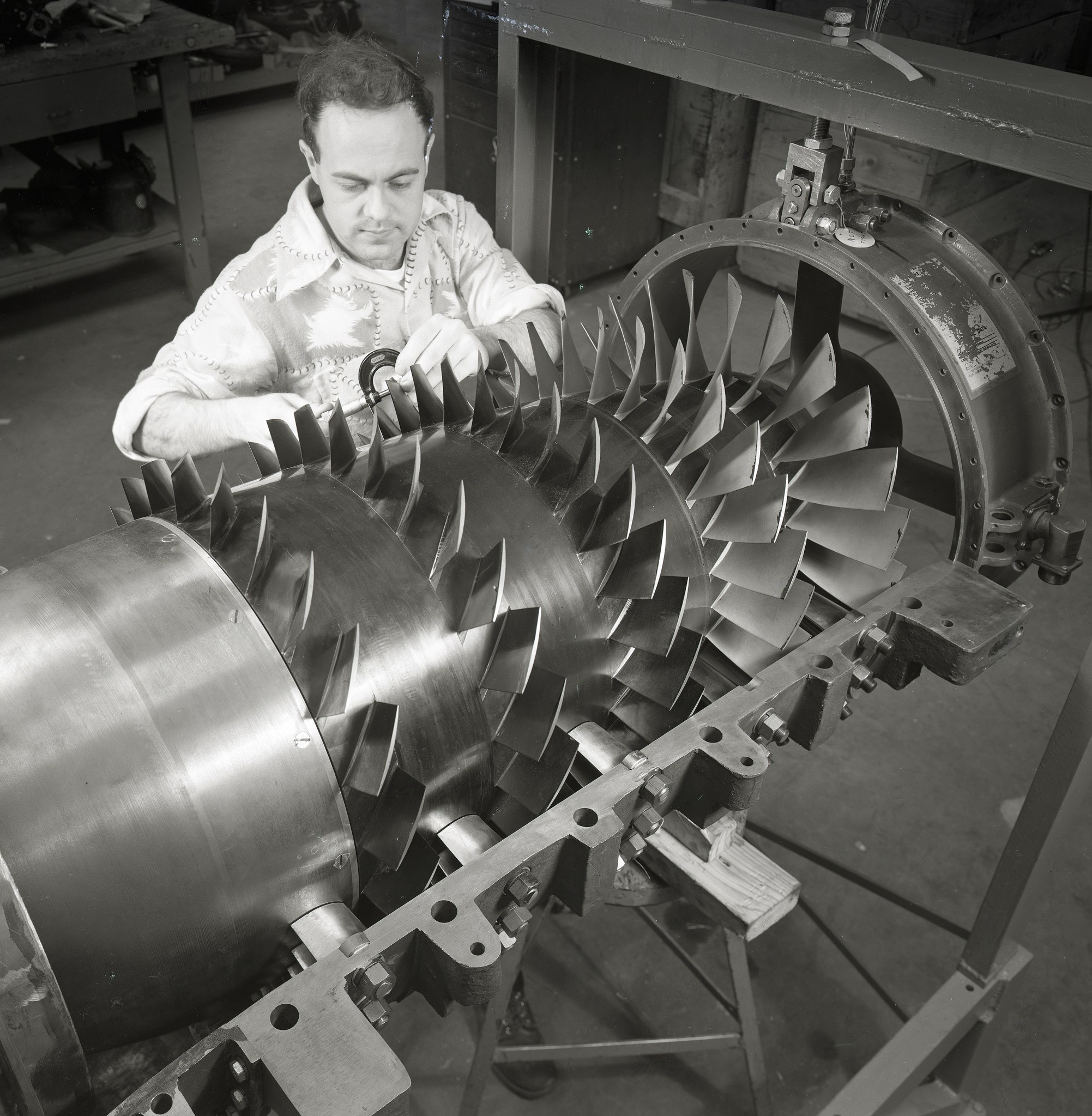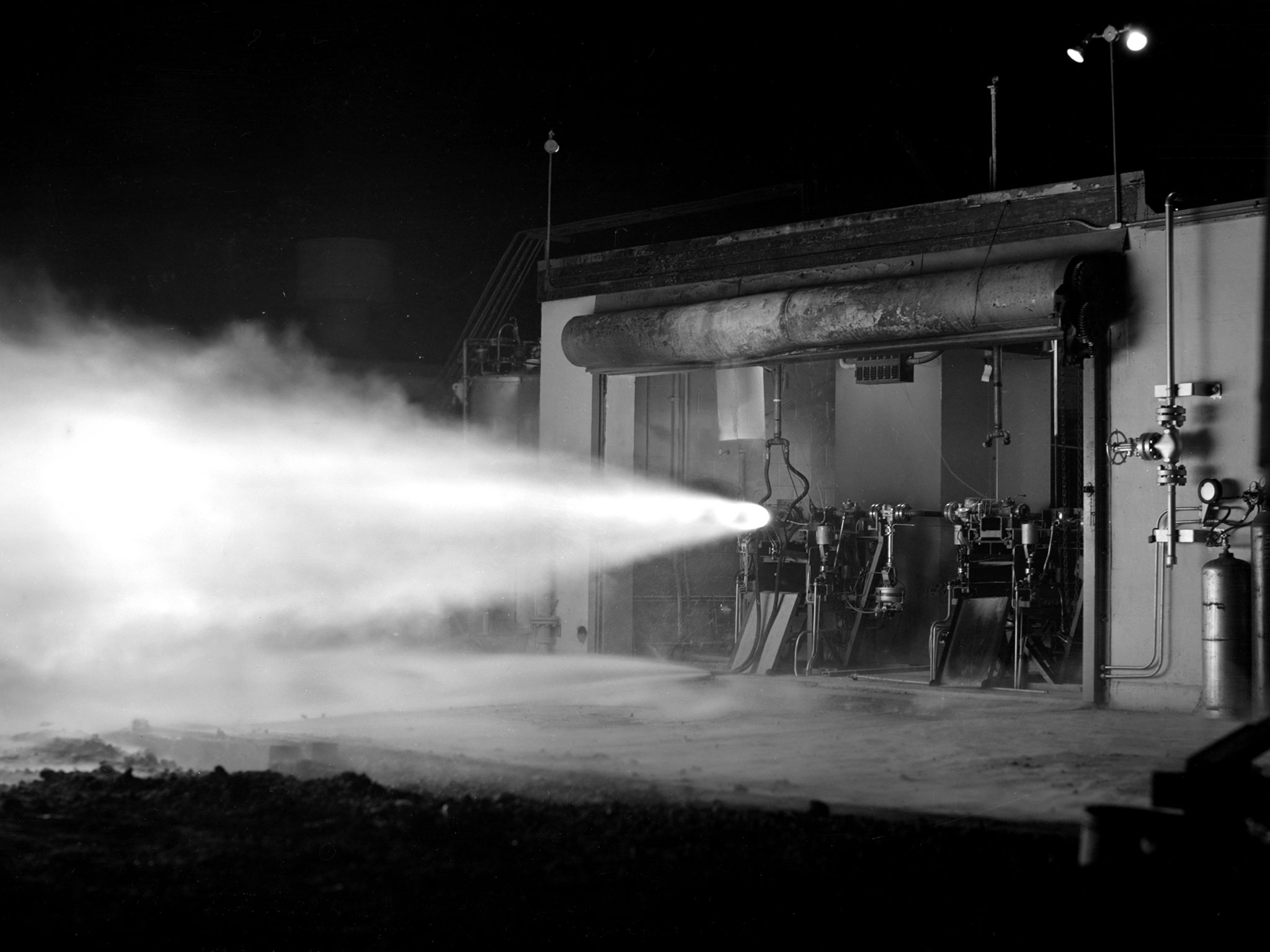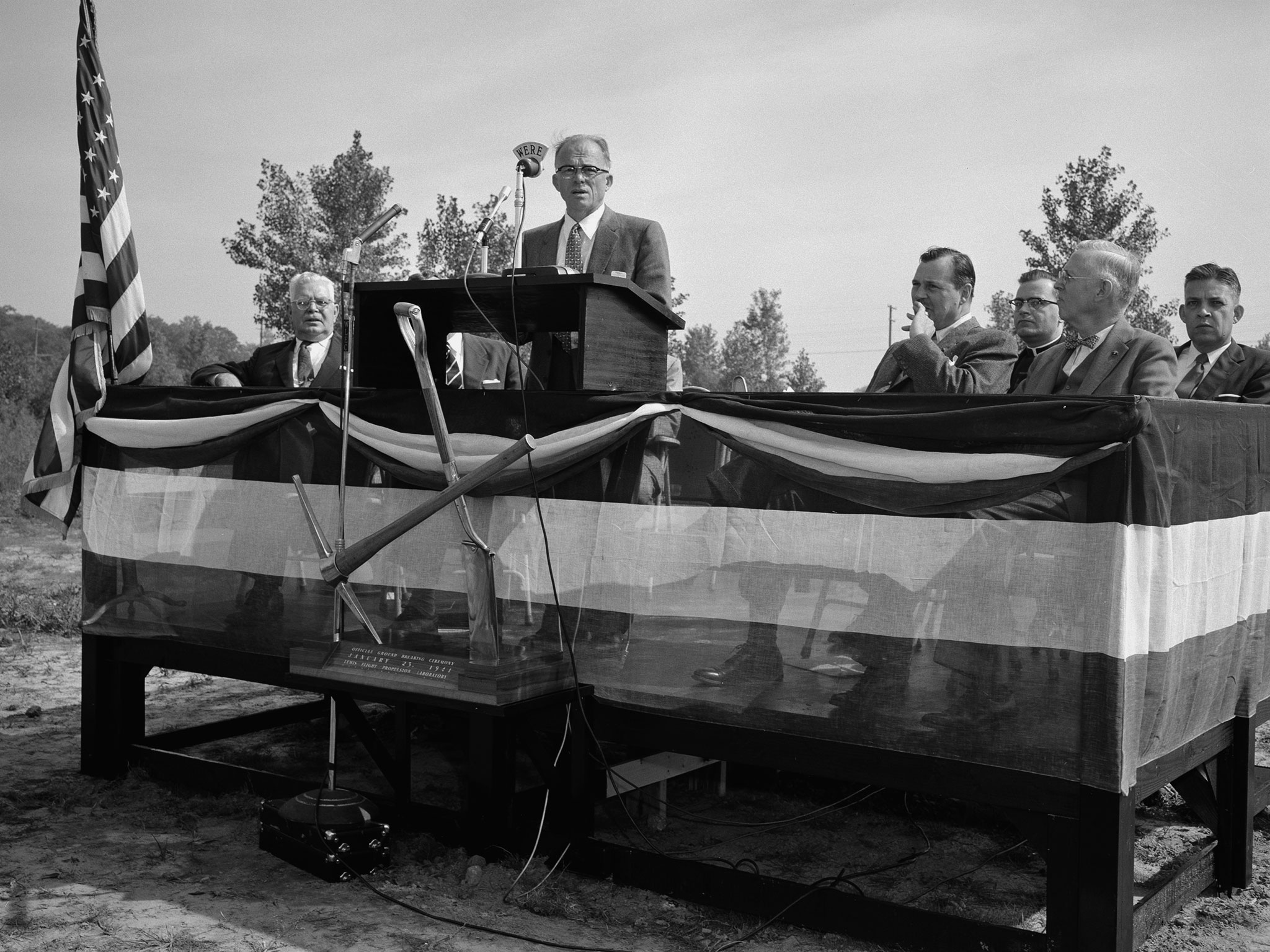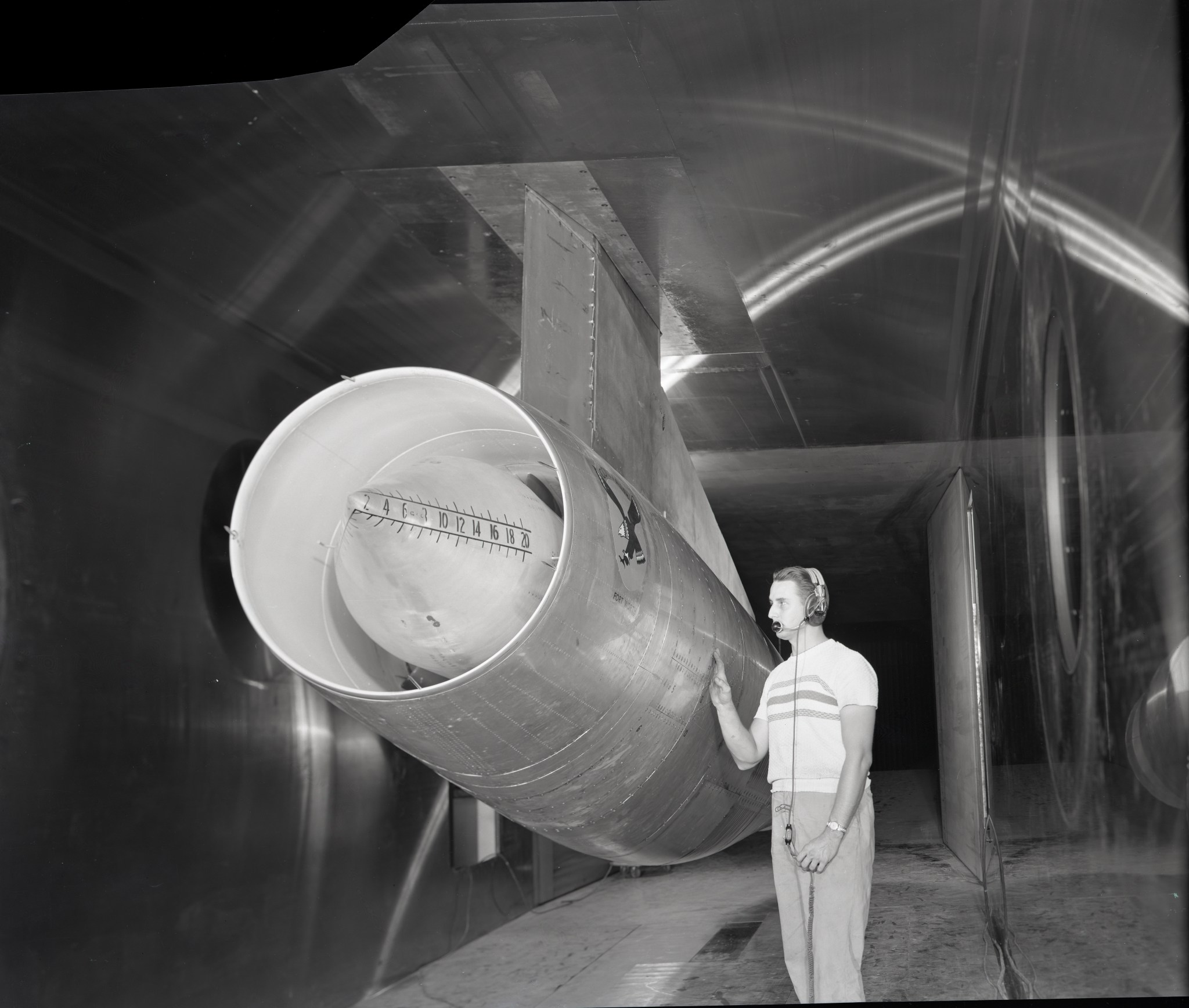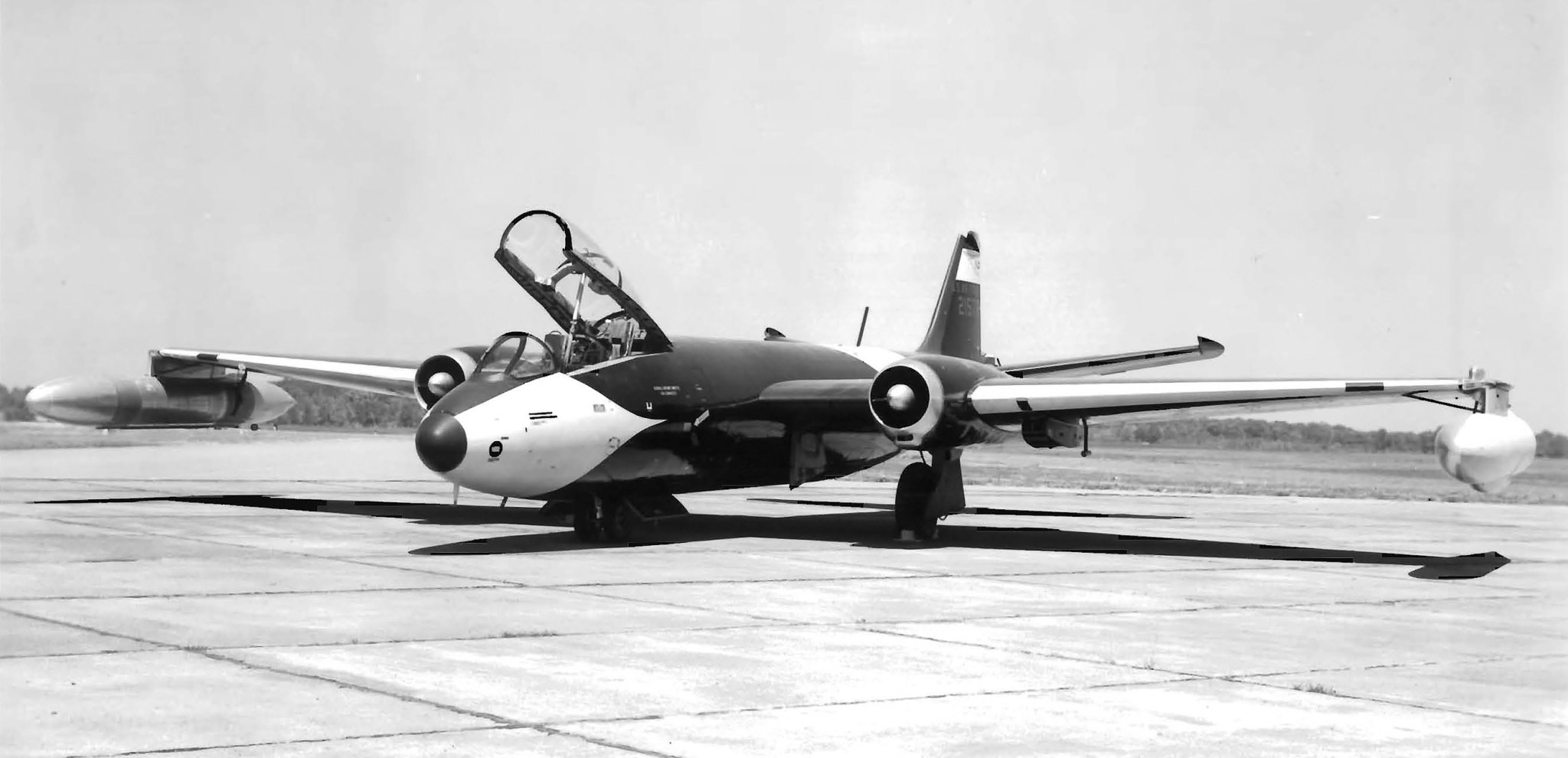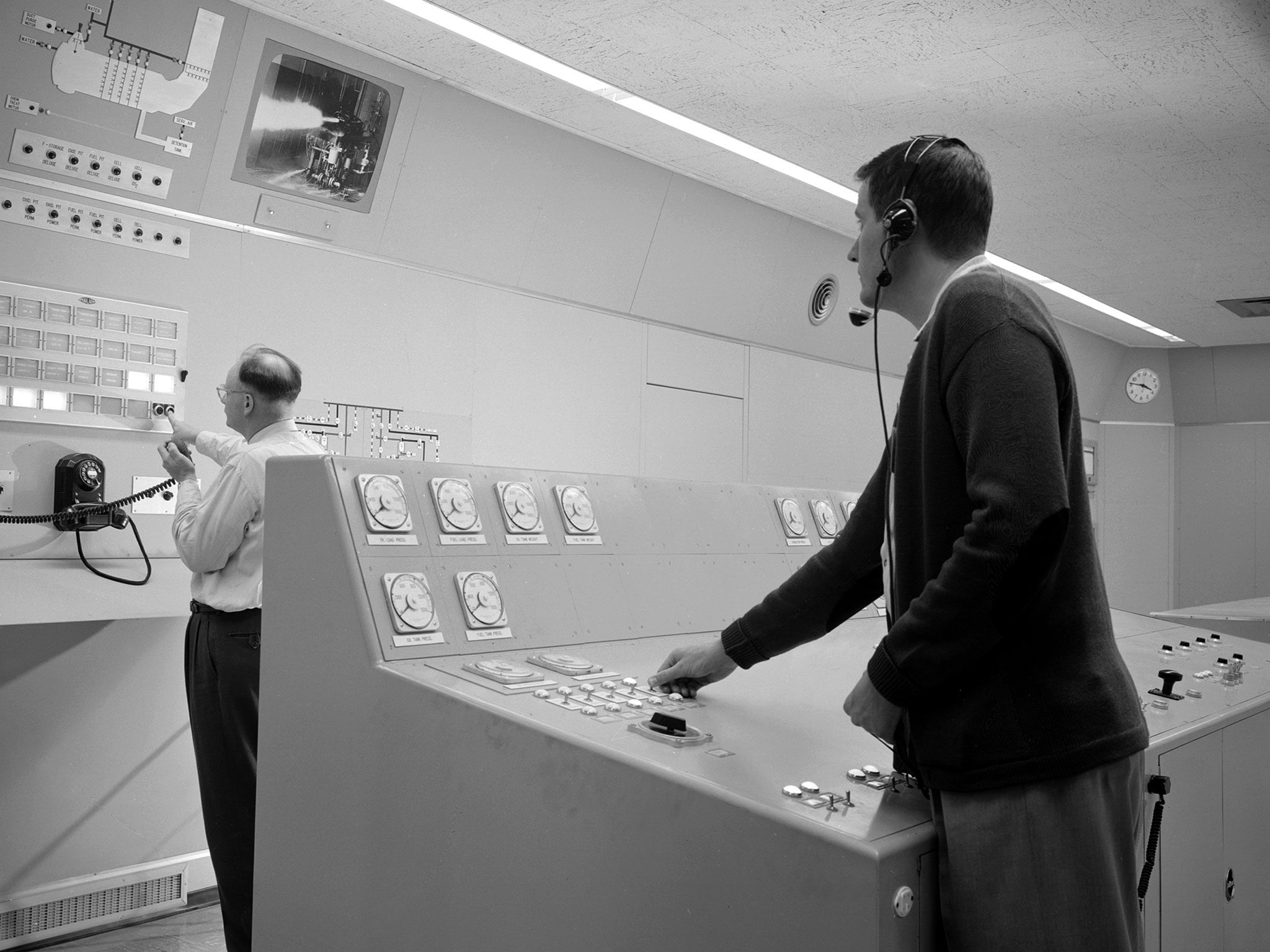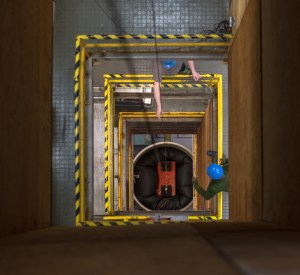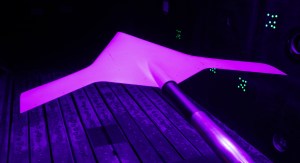In the early 1950s, the Lewis laboratory expanded its efforts in the fields of high-energy propellants and nuclear propulsion while continuing to test new turbojet and ramjet engines.
Propulsion Systems Laboratory
The Lewis laboratory needed new facilities to keep up with the unforeseen jet engine advancements. In the fall of 1952, the new Propulsion Systems Laboratory No. 1 and 2 (PSL) became the nation’s most powerful facility for testing full-scale engines at simulated flight altitudes. Engines for military aircraft, the Navaho Missile, and the Centaur rocket were tested in PSL’s test chambers.
Transonic Compressor
In the mid-1950s Lewis researchers designed a multi-stage transonic compressor to test their theory that compressors possess no inherent design limitations. They surmised that performance could be continually increased with proper design methods. The Lewis researchers successfully verified their findings by testing these transonic compressors in actual engines.
Liquid Hydrogen Firing
In the early 1950s the rocket group began testing high-energy propellants such as diborane, pentaborane, and hydrogen in rocket engines. The lab’s first successful liquid-hydrogen/liquid-oxygen engine firing took place on November 23, 1954. In the mid-1950s Lewis researchers increased their focus on liquid hydrogen as a potential fuel for both aircraft and missiles.
Plum Brook Groundbreaking
In September 1955, NACA and government officials broke ground for the NACA’s Plum Brook Reactor Facility on 500 acres of the 9,000-acre Plum Brook Ordnance Works. The center would lease another 2,600 acres in 1958, and took control of the entire property in 1963.
10-by 10-Foot Supersonic Wind Tunnel
On May 22, 1956, the NACA dedicated its new 10-by 10-Foot Supersonic Wind Tunnel–the most powerful propulsion tunnel in the nation. That fall, the 10-by 10 performed a critical engine inlet test for the Convair B-58 Hustler.
10-by 10 Testing of B-58 Inlet System
Liquid Hydrogen Aircraft
Following the early liquid hydrogen tests, Abe Silverstein and Eldon Hall wrote a report to predicted unparalleled performance of a hydrogen-powered aircraft. In 1955 Lewis engineers began converting a B-57B Canberra to operate on hydrogen. The first successful flights took place in early 1957.
Rocket Engine Test Facility
The Rocket Engine Test Facility (RETF) became operational in the fall of 1957. The RETF was a significant upgrade to the Rocket Lab test cells. The facility contributed to the development of liquid hydrogen technology that powered the Centaur and Saturn upper stages.


























